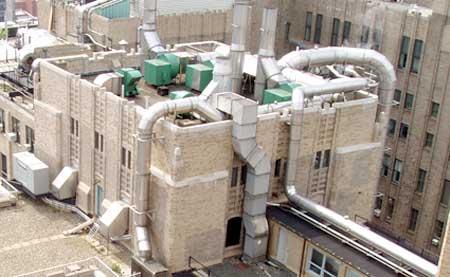Air Resources Management

The Environmental Safety Program assists Columbia University with the prevention and control of air pollution and provides compliance assistance with the New York State Department of Environmental Conservation’s air regulations and the Environmental Protection Agency’s Clean Air Act.
Air Permitting
One of the major initiatives Congress added to the Clean Air Act in 1990 is an operating permit program for larger industrial and commercial sources that release pollutants into the air. Columbia University’s Morningside campus and CUMC both operate under a Title V Permit. The permit specifies the requirements for compliance monitoring, recordkeeping, emissions monitoring and operating for air emissions. Lamont Doherty Earth Observatory operates under an Air Permit Facility, which regulates the emissions, but with less restrictions, due to the lower output of air emissions from the campus.
Refrigerant Management
The ozone layer is a concentration of ozone molecules in the stratosphere. A diminished ozone layer allows more radiation to reach the Earth's surface. For people, overexposure to UV rays can lead to skin cancer, cataracts, and weakened immune systems. A diminished ozone layer is caused by the release of chlorofluorocarbons, hydrofluorocarbons, and other ozone-depleting substances, which are used widely as refrigerants. Columbia University’s Environmental Safety program ensures that all refrigerants in campus refrigerators, water coolers and cooling units are properly recycled. This is accomplished by working with Facilities Management to ensure that contractors hired to work on both large and small refrigerant systems are properly certified by the EPA and are properly documenting all work performed on such systems.
